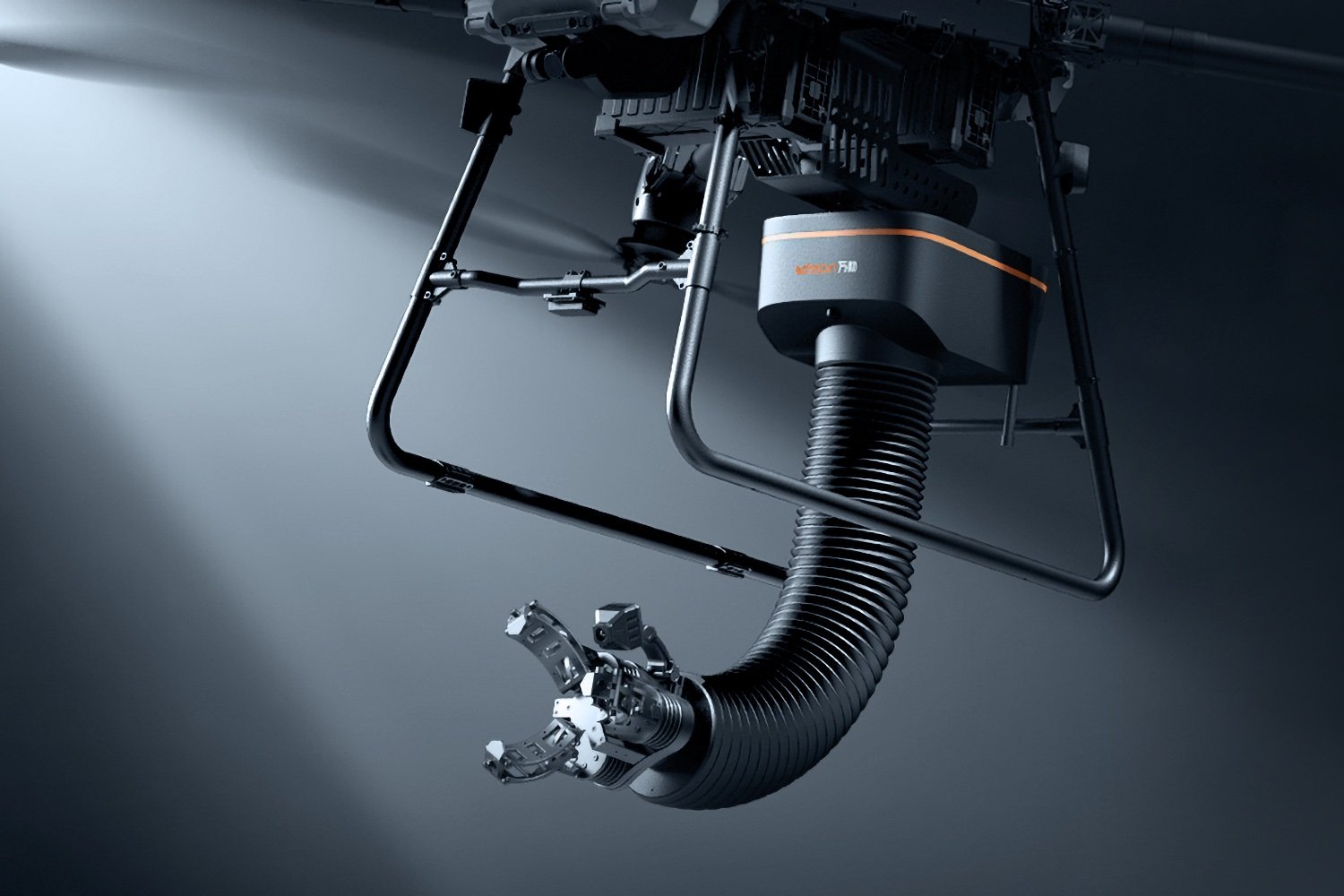CES 2025 saw the arrival of an unexpected innovation: drones capable of grabbing, manipulating or moving objects using robotic arms. These machines, called “Aerial Soft Robots”, are powered by Wisson Robotics’ in-house technology, called Pliabot. The latter makes it possible to reproduce the flexibility and efficiency of human muscles, while remaining light and resistant.
Drones capable of almost anything
The Orion AP30 model, star of the Wisson stand, was presented in collaboration with the FlyCart 30, a massive drone from DJI. Together, they open up new perspectives: inspection of bridges, repair of wind turbines, collection of waste in inaccessible places… and even washing windows at altitude. The idea? Automate tasks that are often dangerous for humans, with unparalleled precision.
But now, this technological feat also raises questions. A robotic arm capable of manipulating objects with precision, mounted on an imposing drone? Some people find this a bit creepy! And we understand them: imagine a giant machine, armed with an articulated arm, flying over your neighborhood. We’re not far from a science fiction film setting starring Doc Ock from Spider-Man…
Despite the apprehension they may cause, these drones open the door to impressive uses. Thanks to their flexible arms, they can operate in complex environments where traditional machines often fail. For example, in logistics, they can deliver packages to tight or hard-to-reach spaces. In infrastructure, they promise to simplify the maintenance of structures like power lines or buildings.
Wisson Robotics does not intend to stop there. Pliabot technology is designed to be affordable and versatile. Made from polymer materials and 3D printed, these robots cost less than their rigid counterparts. And their flexibility also makes them safer: in the event of a collision, they limit damage. According to a company spokesperson, “ these robots are ultra-light, flexible and ideal for interacting with their environment without danger ».
But all this does not happen without asking a few questions. What happens if this technology falls into the wrong hands? What will be the impacts on the privacy or security of citizens? For the moment, these drones remain reserved for industrial uses, but their democratization could spark debate.
Whether you find them fascinating or a little frightening, these flexible-arm drones represent an important step in the evolution of flying machines. And these machines are just the beginning. Whether it’s repairing a bridge or delivering your next package, they might just become part of the scene sooner than you think.
🟣 To not miss any news on the WorldOfSoftware, , .












